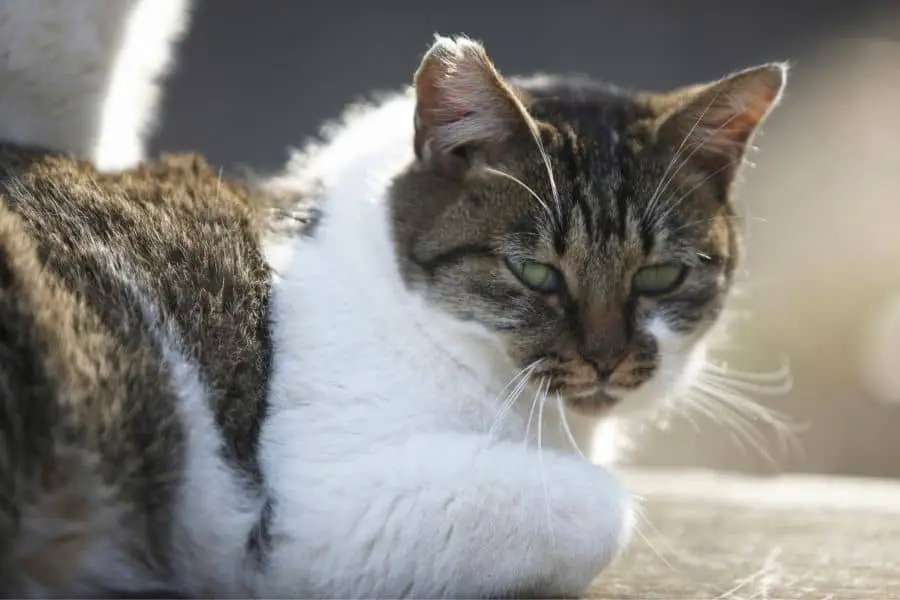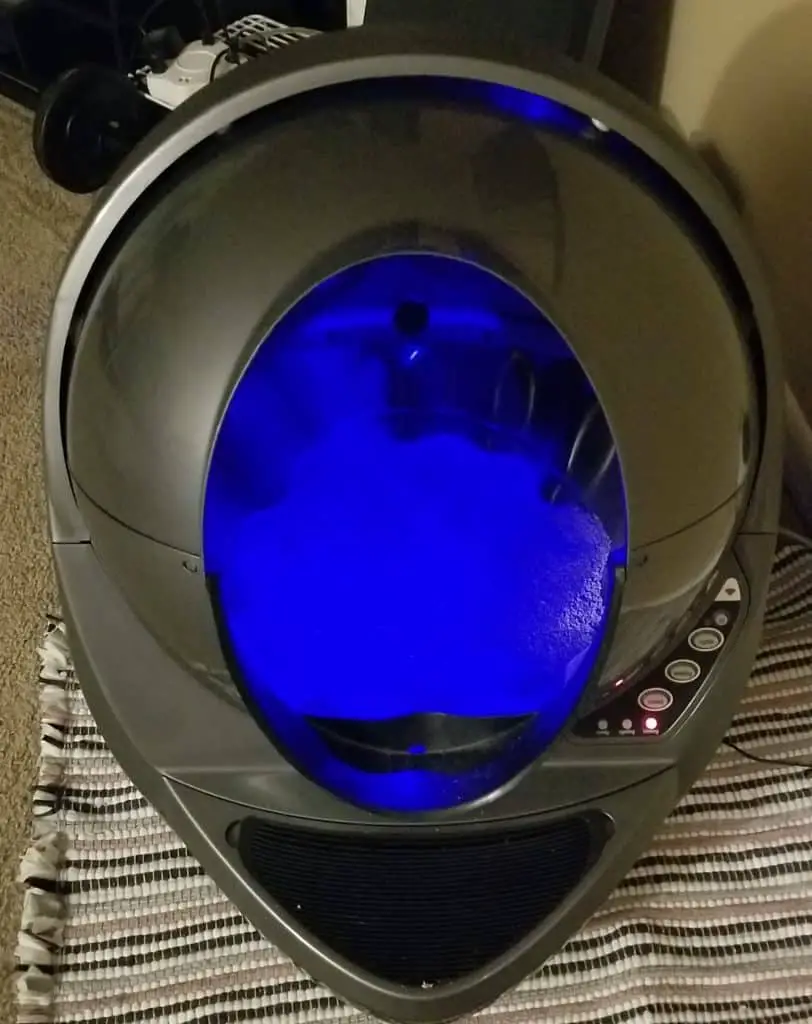More Meows is an Amazon Associate. As an Amazon Associate we earn from qualifying purchases. We may also earn commissions if you purchase products from other retailers after clicking on a link from our site.
Most cat lovers are familiar with the sight of a cat roaming outdoors, and there are plenty of scenarios that may help you guess what the cat’s situation is like. There are, in fact, many differences between lost cats, strays, and feral cats, and it’s crucial to be aware of these variations. So, do feral cats look different?
Feral cats do look different when compared to strays or lost cats. This is because they know how to care for themselves without human intervention and will appear to be well-kept as opposed to strays or lost cats.
Whether you are hoping to help outdoor cats in need or are simply preparing yourself for the safety of yourself and your family, understanding how to recognize a feral cat outdoors is the first step in determining how to behave around them.
If you are wondering what the best products are for your cat, check out this article that will break down all my recommendations for you: Things To Buy For A Cat Right Now!
Stick around to find out how feral cats can be identified so that you can take the appropriate steps the next time you encounter one.
Do Feral Cats Look Different?
Yes, feral cats do look different when compared to strays or lost cats. This is mostly since feral cats are equipped with the skills needed to look after themselves outdoors, which results in them being well-kept despite their harsh surroundings.
Feral cats’ health is also relatively well-kept, and this translates into the condition of their external features such as the fur, eyes, whiskers, and teeth.
While the breed of the cat will, of course, play a large role in their appearance, the cleanliness, grooming, and overall health of the cat will be similar in all feral cats, regardless of their breed.
Some breeds are more susceptible to certain conditions or environmental factors, while others are genetically more equipped to survive outdoors. This is also something that could be considered when assessing a feral cat.
How Can You Tell if a Cat is Feral?
Few indicators can be used to determine if a cat is feral or not. Most of these indicators are dictated by the cat’s physical appearance and overall behavior and certain traits that are more commonly observed in feral cats.
Physical Characteristics of Feral Cats

Feral cats are mostly clean and groomed since they have had experience with looking after their own needs and the needs of their young if they have had litters. This is because feral cats have had little to no experience with humans, unlike domesticated cats, which their caregivers commonly groom.
This means that their fur, limbs, and tail will be mostly clean and groomed at any given moment. Their eyes, ears, and whiskers will also be in decent condition. Although, spotting a feral cat that has injured components such as eyes, damaged whiskers, torn ears, or damaged limbs is not uncommon.
Being scratched up is mostly due to altercations with animals and even humans and might be a helpful indicator of a feral cat.
Speaking of feral cats fighting and getting scratched up, you may wonder if they fight to the death. Check out my article on if feral cats fight to the death: Click Here.
Feral Cat Health
In terms of feral cats’ health, they are well equipped to find their sources of nourishment outdoors. They frequently eat small birds and rodents, and they scavenge rubbish bins or carcasses when they are desperate.
For water, feral cats aim for puddles, pools, ponds, birdbaths, or any source of still water. Of course, these food and water sources may be tainted by a wide range of parasites, diseases, and bacteria overall, but it keeps feral cats sustained.
Since they have knowledge of nourishment sources and are skilled enough to acquire food and water at these locations, feral cats will have a decent physical health level. They will be strong with an increased muscle mass level and would appear to be in good shape with a relatively healthy weight.
Living outdoors does affect a feral cat’s health, but do feral cats want to be indoors? Check out my article with serious information about if feral cats want to be indoors: Click Here.
Behavior of Feral Cats
Feral cats’ most striking characteristics can be found in their demeanor, as they behave very differently compared to non-feral animals. This is because they live by entirely different rules and laws of nature, and they are not dependent or semi-dependent on humans for survival like domesticated cats are.
Thus, their reaction to humans may be naturally aggressive, fearful, and defensive, as they may assume that you will harm them instead of helping them.
Some feral cats are timid in nature, whether it be due to their breed or life experiences. These cats may be more submissive to humans as opposed to showing aggression or maybe shy and run away.
Unlike stray or lost cats who frequently communicate with humans, feral cats are quiet and do not communicate with humans using eye contact or vocalization. They generally do not interact with humans at all.
Also, feral cats live in colonies and are often observed roaming in packs or groups for ease of hunting, safety, and a wide range of other practical reasons. So, cats found roaming together are more likely to be feral.
Feral cats also prefer to wander at night in search of food and water, as these low light hours are not as crowded by humans and other animals, and there are plenty of hunting opportunities at night as well.
You may wonder if feral cats actually drink water. Take a look at my article that has valuable insights on if feral cats drink water: Click Here.
How Can You Tell the Difference Between a Stray Cat and a Feral Cat?
On the other hand, stray cats will resemble the profile of an animal that has not been cared for. Whether the animal has been abandoned or has been lost for some time, stray cats are not as equipped for the harsh outside world as feral cats are.
Stray Cat Physical Characteristics
As a result, they will unrightfully suffer the consequences and will likely not be clean or well-groomed, although they may still make attempts to groom themselves. Strays may have matted coats, crusty eyes, tear stains, dirt around the nose, and dirty ears as well. It’s important to know that stray cats may become feral over time if their lifestyle continues outdoors and successfully adopt the feral colony’s behaviors.
Life of Stray Cats
Also, strays are not aware of the locations where food and water can be found outdoors, since as far as they have learned throughout their lives, food and water came from their human in bowls or dispensers.
Strays may scavenge for food or become opportunistic eaters – consuming what is available when there is an opportunity for it. But, they will likely not sustain themselves very well with a diet based on luck.
Strays will not be as effective of hunters as feral cats, although they may begin to learn the tricks of the trade. Stray cats may appear malnourished, may be quite skinny, and may have side effects of malnourishment as well. This includes loss of fur, unhealthy claws, and much more.
Behavior of Stray Cats
Unlike feral cats, stray cats would have had numerous interactions with humans before they had unfortunately begun calling the streets their home. They may have thrived off of human relationships and would likely be wishful for the day they could have that back. As a result, it’s quite easy to spot the difference between a feral cat and a stray cat based on their behavior with humans in particular.
While feral cats will run, hide, or otherwise have muted responses to humans, strays may be on the opposite end of the communication scale. This could range from making intense and begging eye contact, getting comfortable on humans’ porches, and even meowing, chirping, or crying at humans. Whether this is for food, water, help, or a simple cuddle is unknown, but it may be clear that this cat longs for absolutely any form of the life it once had.
There is no doubt that even the thought of this is heartbreaking, and sadly there are many cases of owners who simply let their cats out into the world unequipped. In such cases, Good Samaritans may attempt to help stray cats with safe and appropriate steps since the cat may be an incredibly lovable inclusion to the family and may even be lost with a sad owner hoping they will return home.
Are Feral Cats Bigger Than Domestic Cats?
While domesticated cats will, of course, be healthier than cats living outdoors, feral cats will most likely be larger than non-feral cats living outdoors. In most cases, feral cats somehow manage to get most of the nourishment they need for sustenance every day and will not suffer from malnutrition as stray or lost cats would.
In some cases, feral cats may grow bigger than the standard norm for their breed, but this is not specific to feral cats.
There are many things that one could keep an eye out for to identify a feral cat versus a stray or a lost cat. Always be sure to give feral cats some space while observing them, though, as they strongly appreciate their solitude from humanity.
Conclusion
In conclusion, feral cats do look different than other cats (including strays and domestic cats). This is because feral cats will appear better groomed and more muscular or strong. Stray cats will likely appear disheveled since they are pretty much out of their element outdoors. Domestic cats will probably look like they are someone’s pet cat – maybe they have a collar, maybe they want to be your friend, that sort of thing.
If you liked this article, check out a few more:
- Do Feral Cats Purr? Quick Reasons You Need To See: Click Here.
- Do Feral Cats Meow? Remarkably Interesting Reasons: Click Here.
- Do Feral Cats Abandon Their Kittens? The Full Truth: Click Here.
Here are some of my favorite cat products
In addition to checking out some other More Meows articles, I hope you’ll check out some of my favorite cat products as well. These are affiliate links, so if you end up using them, I’ll get a commission at no extra cost to you. These are the products I really do find most helpful.
Litter Box: I started out with normal, traditional litter boxes for my cat. Then, I tried this automatic litter box on Amazon (affiliate link), which helped reduce the litter upkeep. Finally, I am now a believer in the Litter-Robot 3 Connect on Amazon (affiliate link). This robotic litter box is not for everyone based on the price tag, but for me the benefits (very little upkeep, works efficiently, clean, mobile app) far outweighed the cost.

Cat Tree: I have purchased a couple of this Amazon Basics Cat Tree on Amazon (affiliate link). My cat spends a lot of time on and around this cat tree, which I position near my sofa. She uses the scratching posts on this cat tree multiple times a day, which means she is not scratching the sofa instead.
Cat Water Fountain: I love this cat water fountain on Amazon (affiliate link). There are three main benefits to having a water fountain like this for your cat. The first benefit is that it keeps water running so that your cat doesn’t need to drink still water. The second benefit is that it filters the water. The third benefit is that it will keep your cat hydrated!
